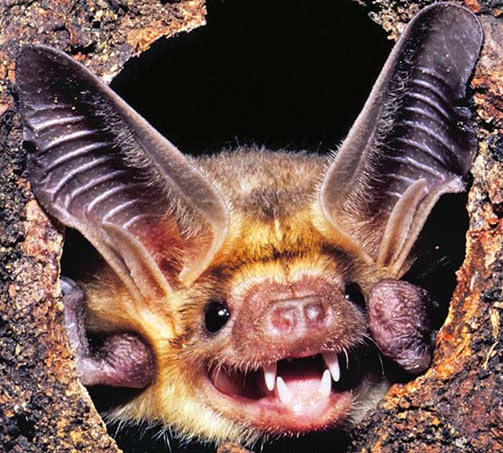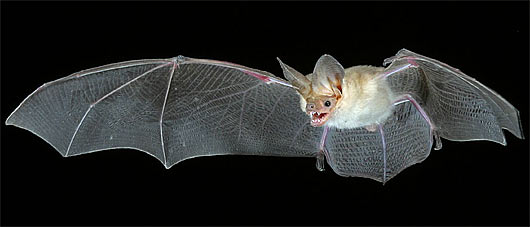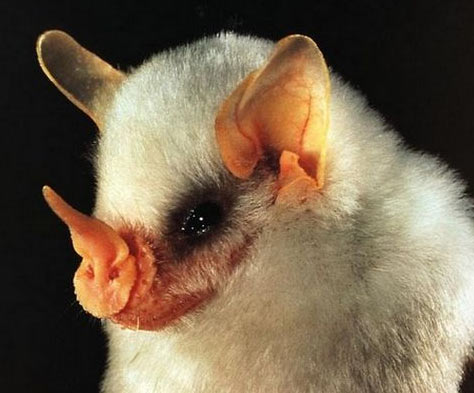Bats – The Flying, Furry Mammal of the Night

Bats are difficult to study because of their secretive, nighttime habits (and their crazy flight patterns). Even so, over 1000 species have been identified and more are still being found, primarily in South American forests. New ones are being discovered, and the classification of the 1000 plus species, is being improved. Bats are the most widely distributed terrestrial mammal. They are found in Alaska, to the bottom of Argentina and from near the Arctic Circle to South Africa. They really enjoy the tropical regions and temperate zones.

Although bats range in size from the small hog-nosed bat that weighs less than a penny to flying foxes whose wing spans are greater than 5 feet, the majority tend to be small. All species of bat share a fairly similar body form – fur and skin, wings, teeth, reproductive technique, and visual and hearing systems. The skin is normally black or dark grayish brown in color and has small transparent hairs. Most bats have small eyes but their auditory technique (sonar) is advanced to say the least.

Some bats feed on insects and whole animals. Vampire bats, ranging from Mexico South to Argentina, feed only on the blood. There are also herbivorous species that feed on fruit and flowers alone. Females give birth at roost sites, often while hanging upside down. Youngsters are pretty helpless until they can fly, so they tend to mature rapidly like the brown bat which can reach adult size and start flying as young as three weeks old.

Being nocturnal, bats are protected against being visually spotted by predators and from exposure to the sun and to high temperatures of the day. They routinely seek shelter in the day light. Caves provide protection from the sun and predators and permit bats to preserve energy under consistent temperature and moisture conditions. They can also shelter in tree cavities, crevices, buildings, and trees.

While tropical bats are active all year round, others in temperate regions can hibernate in the winter in order to accommodate the diminished food supply. Most hibernating bats spend the summer feeding heavily on insects, building up fat to provide energy for sleeping through a winter season. Whle hibernating, the bat allows its body temperature to fall to that of the surrounding air, and as its pulse and breathing rates slow down, it fundamentally enters a state of suspended animation.

Straw colored bats
The main thing that sets bats apart from other mammals is flight. Some bats fly high, quick, and far, while others fly more slowly, maneuvering around obstacles, catching their prey on the wing, or plucking it from the ground. Soaring is unusual in bats, as is swift flight in comparison with birds. Bats fly in flocks sometimes numbering in the thousands, a precaution against predators.
Some bats use echolocation, a pulse method of high frequency sounds and their echoes, to navigate and to locate food. They first emit sound, then get and analyze the feedback of the returning echoes. This lets them interpret the data on direction and distance to their target. This works best over short distances, and can be so accurate, that some bats appear able to distinguish among individual species of insects. Bats are human allies in controlling the insect population. Most species in the United States for example feed on beetles, moths, and crickets, plenty of of which damage vegetation and are damaging to agricultural interests.
